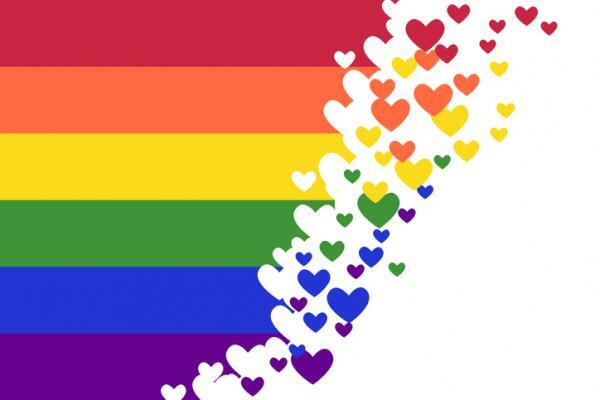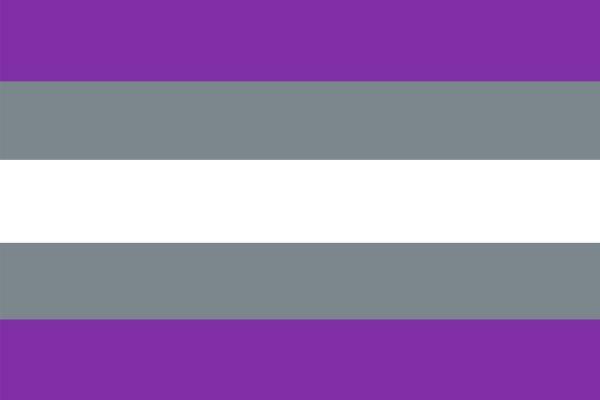
In general, we have been raised in a society where through stories, movies, songs and a variety of advertisements we have been instilled that the most normal and Common is that if you are a woman you feel attracted to a man and vice versa, marking as something out of the ordinary and even frowned upon to be attracted to a person of the same sex than you. And not only this, they have also taught us that women should feel like a woman and this entails a series of practices that define you as well as what it is to be a man. If these established canons do not define you, you are "a person who deviates from the norm" and can be condemned with mockery at the social level.
Luckily, currently the series are integrating more diversity in the characters, a diversity that helps the population to integrate that any type of sexual orientation is valid that is chosen as well as include characters that present dissonances with their sex-gender and give visibility to a group that until now had been silenced and marginalized. In this article on Psychology- Online we want to tell you about how many
Index
- What is sexual orientation
- List of sexual orientations
- Difference between biological sex, sexual orientation, gender identity and gender expression
What is sexual orientation.
Sexual orientation or sexual tendency refers to the sexual desire or sexual, emotional, loving, erotic attraction that the person feels towards another person.
How many types of sexual orientation are there? In reality, sexual orientation is their own and each person is sexually attracted to different people. So we could have as many orientations as people. However, we can group the sexual orientations that exist in some groups. It is not that there are now new sexual orientations and gender identities, but rather that we are beginning to name them. It is a way of recognizing yourself and others through words, it is not a label, but a characteristic that can help you get to know yourself. In addition, sexuality and sexual orientation can change. It does not have to be stable and fixed for life. In this article we talk about the subject and explain at what age can a person's sexuality be defined.
List of sexual orientations.
Below we list the most popular types of sexual orientations today.
- Heterosexual: sexual attraction or desire is directed at a person of the opposite sex or gender. Male to female and vice versa. It is the most visible form of orientation in our society through advertisements, series, movies, novels, etc. It should be mentioned, that it is the most visible does not mean that it is the most correct that the others are not acceptable, in terms of sexual orientation we must emphasize that there is no sexual orientation neither good nor bad, with which we must be able to express our desire with total freedom as long as this freedom does not coerce the other person.
- Homosexual: sexual attraction and desire are oriented to a person of the same sex, for example; woman-woman, man-man.
- Bisexuality: another of the types of sexual tendencies is bisexuality, which is the physical or sentimental attraction that goes directed to both female and male sex, not necessarily with the same frequency and intensity. In this article we talk about bisexuality.
- Asexuality: people who are asexual are those who do not have any type of sexual attraction to other people. It could be defined as the absence of sexual orientation or sexual interest. In this article we explain what is being asexual.
- Pansexuality: the attraction is more directed to the person and not so much to her sex or gender. Bisexual people focus more on the person in a holistic way, their personality, the way they act, and leave their gender or sex in the background. In this article we talk in depth about what is pansexuality.
- Autosexuality: it is the attraction that a person generates towards oneself. Stimulate self-love.
- Demisexuality: the attraction comes from the bond generated and not so much from the first appearance, that is, for sexual desire to be born there must be an emotional bond.
- Skoliosexualdad: it is a type of sexual orientation that refers to people who are sexually attracted to people who do not identify with either of the two genders.
Difference between biological sex, sexual orientation, gender identity and gender expression.
The biological sex is the sex with which we are born has to do with our genitalia and our reproductive system (female or male) and with our sex chromosomes (XX as female, XY as male). In general, two more sexes are known, male and female, although there are also intersex people: people who are born with both male and female biological traits. In this article we explain what is intersex.
The gender identity has to do with the internal construction of the self reflecting a deep and experienced sense of one's own sex. All people have a gender identity and it is usually in line with the sex assigned at birth (cisgender). This gender identity is often conditioned by stereotypes and cultural or social pressures on gender. People who do not identify with their biological sex are called transgender people, biologically speaking a man who feels like a woman and vice versa. We also find the gender non-binary, this concept responds to all those people who do not fully identify with the gender they have born nor with the other gender, that is, they do not identify with either of both roles and can experience both of them. In this article we explain what is gender identity and how is it constructed.
The gender expression responds to our way of showing ourselves to other people, the way in which we manifest our gender through our behavior, dress, makeup, etc. Gender expression can be both masculine or feminine and not respond to any specific one. It is worth mentioning that on many occasions gender expression responds to social stereotypes of how a person according to their biological sex should behave. People who do not conform to these stereotypes, unfortunately, can provoke or be the cause of ridicule and social rejection. Who has not ever heard: "this is a fag" or "this is a tomboy", for not conforming to the canons established by society. In our hands is allow each person to express their gender identity with complete freedom without being a victim of social prejudice.
This article is merely informative, in Psychology-Online we do not have the power to make a diagnosis or recommend a treatment. We invite you to go to a psychologist to treat your particular case.
If you want to read more articles similar to Types of sexual orientations, we recommend that you enter our category of Sexology.
Bibliography
- Dolera, L. (2018). Bite the apple. Barcelona, Planet.


